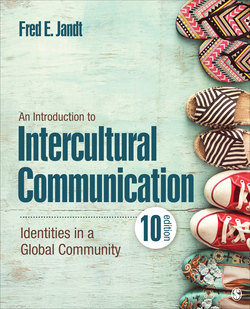Читать книгу An Introduction to Intercultural Communication - Fred E. Jandt - Страница 118
На сайте Литреса книга снята с продажи.
Focus on Skills 3.1 Interpreting Gestures
ОглавлениеA soccer player in London makes a gesture that some see as the quenelle.
Christopher Lee/Getty Image Sport/Getty Images
Assume you work in public relations for the San Antonio Spurs. All-NBA point guard Tony Parker was harshly criticized in the media for making a gesture identified as a reverse Nazi salute. The Simon Wiesenthal Center (2013), a major Jewish human rights organization in the United States, called on Parker to apologize for using the gesture.
You quickly do some background research and learn that the quenelle has been commonly used in France for many years. French comedian Dieudonné M’bala M’bala was said to have popularized the gesture (one hand pointing downward, the other touching the shoulder with an arm across the chest) to signify antiestablishment disdain. A native of France, Parker was photographed displaying the gesture with Dieudonné 3 years earlier.
Recently, Dieudonné has been accused of using the gesture to connote anti-Semitism. Dieudonné has been convicted several times for inciting racial hatred or anti-Semitism. Photos on French news sites show a man doing the gesture in front of the Jewish school in Toulouse where three children and a rabbi were gunned down in 2012. Anti-Defamation League national director Abraham H. Foxman issued a statement: “We recognize that its use is not always anti-Semitic. However, our concern is that French athletes and entertainers have now made the quenelle into a faddish element, which has the potential to be mimicked by other young fans and athletes around the world” (quoted in Monroe, 2013, p. A9).
1 Clearly, cultural background greatly influences perception. Is this a simple example of perceptual interpretation?
2 What would you say in a press release to be issued by Parker and the team?
3 Is the quenelle so offensive as to justify banning it?
4 Do professional athletes and entertainers have social responsibility for their communication?
